SECOND SKIN Encounters
"Interweaving Structures:
Fabric as Material, Method, and Message”
The "Second Skin: Encounters" exhibition at Bergen’s KODE Lysverket, curated by Tim Parry Williams, was the culmination of the international residence project titled "Interweaving Structures: Fabric as Material, Method, and Message.” organised by the Central Museum of Textiles in Łódź, together with the Doctoral School of the Jan Matejko Academy of Fine Arts in Krakow and the Faculty of Fine Art, Music, and Design at the University of Bergen.
The project, spanning across three residencies in 2022 provided participating artists with diverse perspectives on textiles through a rich programme of research trips, meetings, lectures and discussions. Fruit of their work had its premiere exhibition at the Central Museum of Textiles in Łódź, curated by Marta Lisok.
Project’s research began with traditional themes - exploration of the double warp weavings from Janow in Podlasie and local material culture. The artists contrasted their findings with more observations made during a residency in Norway. Exposure to different angles and cultural contexts enriched their overview of different languages embedded within textiles and contributed to the diverse narratives channeled through the project.
Artists’ visit at the Central Museum of Textiles in Łódź was a crucial element of the programme - the museum boasts one of the largest collections of modern textiles globally. It served as a significant departure point for the project’s research. Additionally, exploring the cityscape of Łódź, with its rich textile history - the city once was the world's largest industry centre - provided a contextual backdrop, enriching participants’ understanding of the interplay between textiles, history, society and culture.
"In this context, the textile museum collections can be seen as archives of biographies, whether on an individual or generational level. This is precisely why they seemed interesting to us as a starting point for the project’s participants. Each of them reached for their own means of expression, be it photography, installation, or video. Using their personal alphabet, they transcribed one or two objects from the collection, decoding the stories they read in these everyday items housed in the museum's archives.” explains Marta Lisok the exhibition’s co-curator.
Such interaction with archival objects, involving their re-writing and re-evaluation, holds exciting opportunity to look at them with a fresh eye and give voice to their aspects and themes embedded within, which were systemically silenced or overlooked in the course of history. With the passage of time, certain artefacts may have accumulated newfound significance, whether on a personal, collective or societal level. Artists then play a key role in unveiling those layers of meaning and revalidating them with its intimate resonance or even political power.
In "Second Skin: Encounters”, this deep research and exploration resulted in a diverse body of work. Some artists paid quite direct homage to particular pieces from the museum’s collection, while others took more unconventional approaches. The varied mediums included textile, installation, digital art, audio, and more, showcasing the richness and diversity of interpretations and points of view involved.
Here’s a glimpse of a few of them.
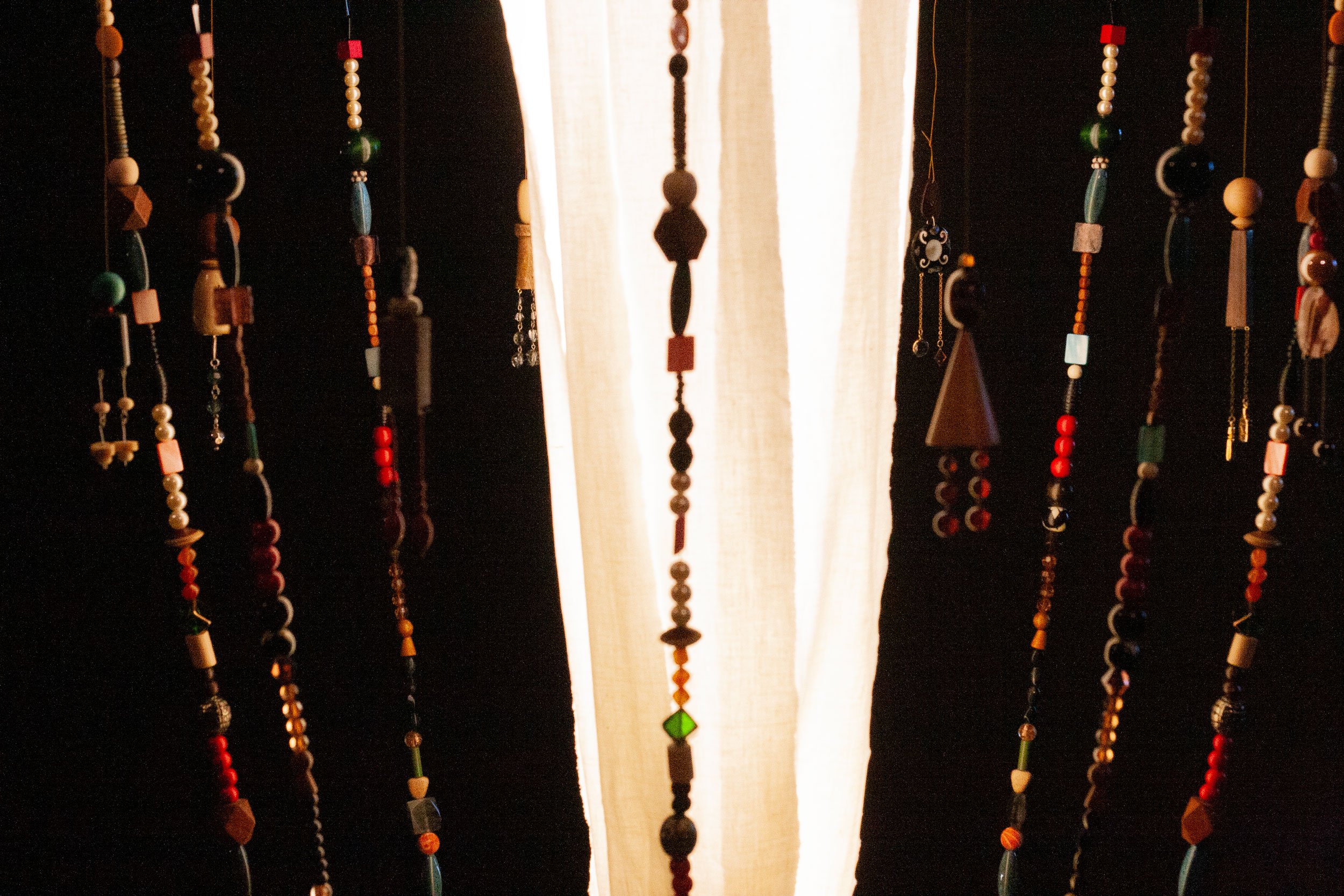
"Chimney" by Paweł Błęcki, strategically positioned at the forefront of the exhibition, serving as both a welcoming and farewell piece for visitors. This unique kinetic installation pays homage to the chimneys of factory buildings during the peak of industrial development in Łódź, which once defined the city's rapidly evolving landscape. The poet Julian Tuwim once even referred to Łódź as a "Chimney town". While this element of a factory today evokes rather bad associations concerning about climate and environmental issues, Błęcki's installation offers a dualism within its image. Its detailed and beautiful form incorporates elements like beads arranged in abstract and human-like shapes and emanates warm, ambient lighting. Like a chimney in a living room, Blecki’s work creates an inviting perspective, making viewers feel a sense of familiarity with the artwork and its surroundings.
Ala Savashevich's, "Light Material, Heavy Work" is a poignant artwork envisioning a factory gate. It is however realised in rather unconventional rough and low quality material—oakum. The choice of this fragile yarn serves to bring attention to the often overlooked aspect of the factory setting —the hard work done by women, positioned at the lowest rung of the hierarchy. Savashevich's artwork nods to the historical oversight of giving credit to these women for their resilient labor, highlighting their contribution and hardships endured.
Monika Drożyńska's artwork, "Snowaczki, Przewijaczki, Tkaczki, Przewlekaczki,” sheds a light on the overlooked and muted aspects of factory reality, specifically focusing on the lives of female textile workers whose stories often went unnoticed beyond mere entries in factory ledgers. The artist drew inspiration from the museum's archives, sourcing the names of these women to reconstruct a record of their existence. For Drożyńska, hand embroidery serves as a means of creative expression and a powerful tool for storytelling,. It is a way to challenge its sociopolitical framing as a gendered domestic activity of no artistic merit The exhibited embroidery piece is part of her "Friends" series, where she hand-embroiders lists of women who haven't received recognition in various realms such as culture, politics, or science. Through this series Drożyńska seeks to immortalise and honour the presence of these women in history.
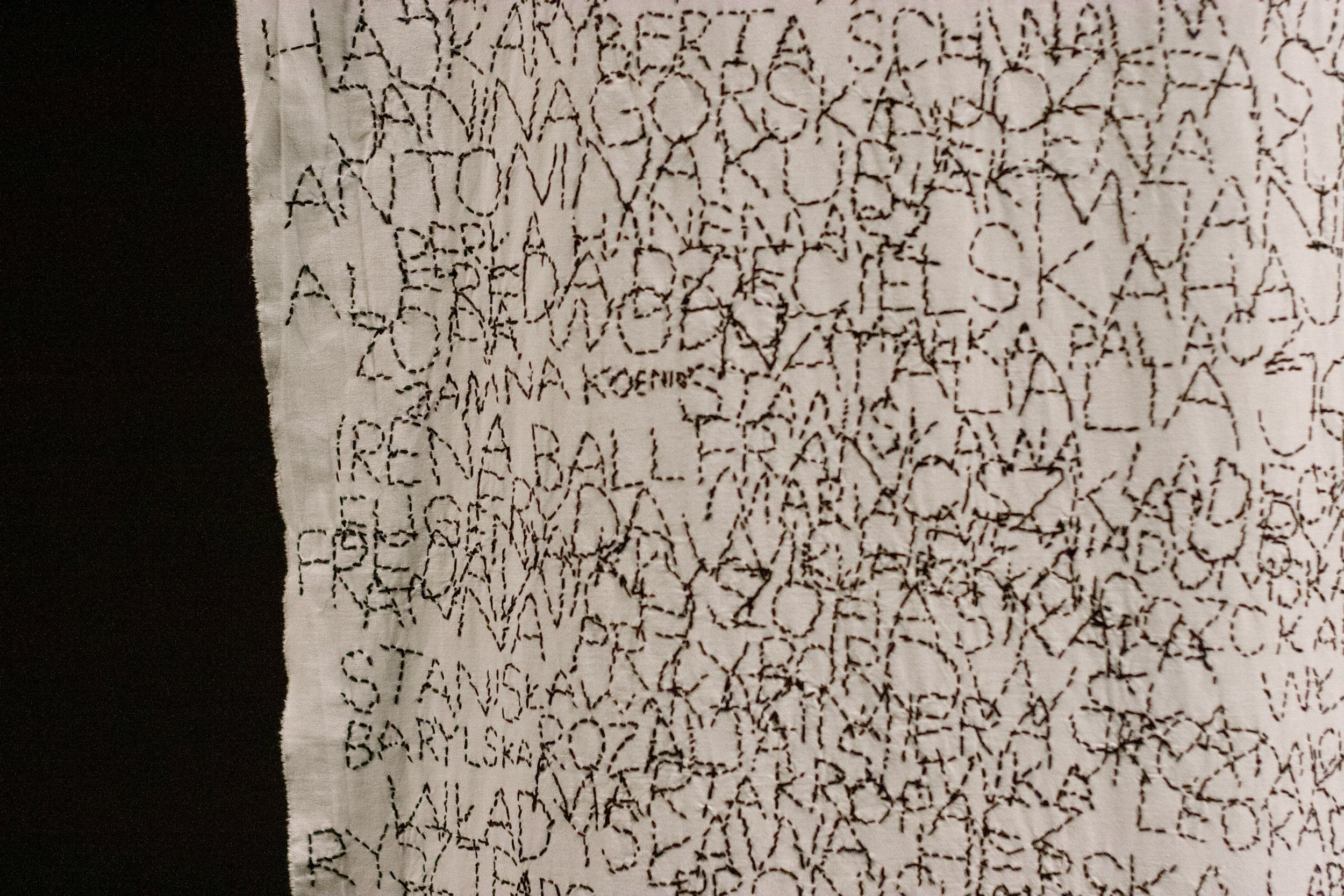
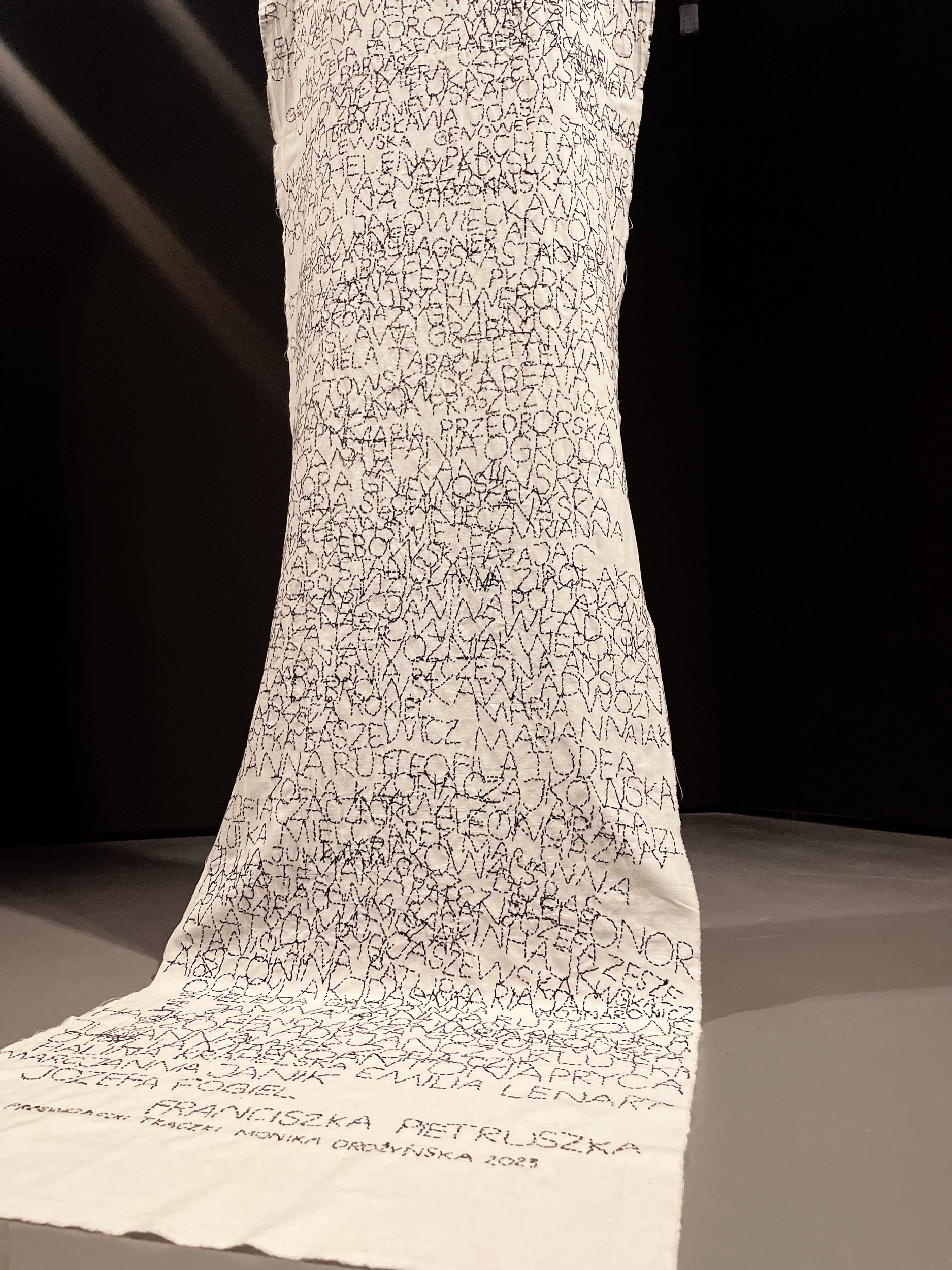
The resonance of "Salty Sweat" by Grzegorz Demczuk shares Savashevich’s and Drozynska’s sensitivity to the themes of labor and the hardships of factory work. Demczuk takes a very physical perspective; jumpsuit commonly associated with labour, takes on the form of a sculpture embodying the effects of an unbalanced dynamic - hard labor versus the human physicality. The body pushed to the limit and its chemical and physical reactions to the conditions conceptualise an organic form embodying those very conditions.
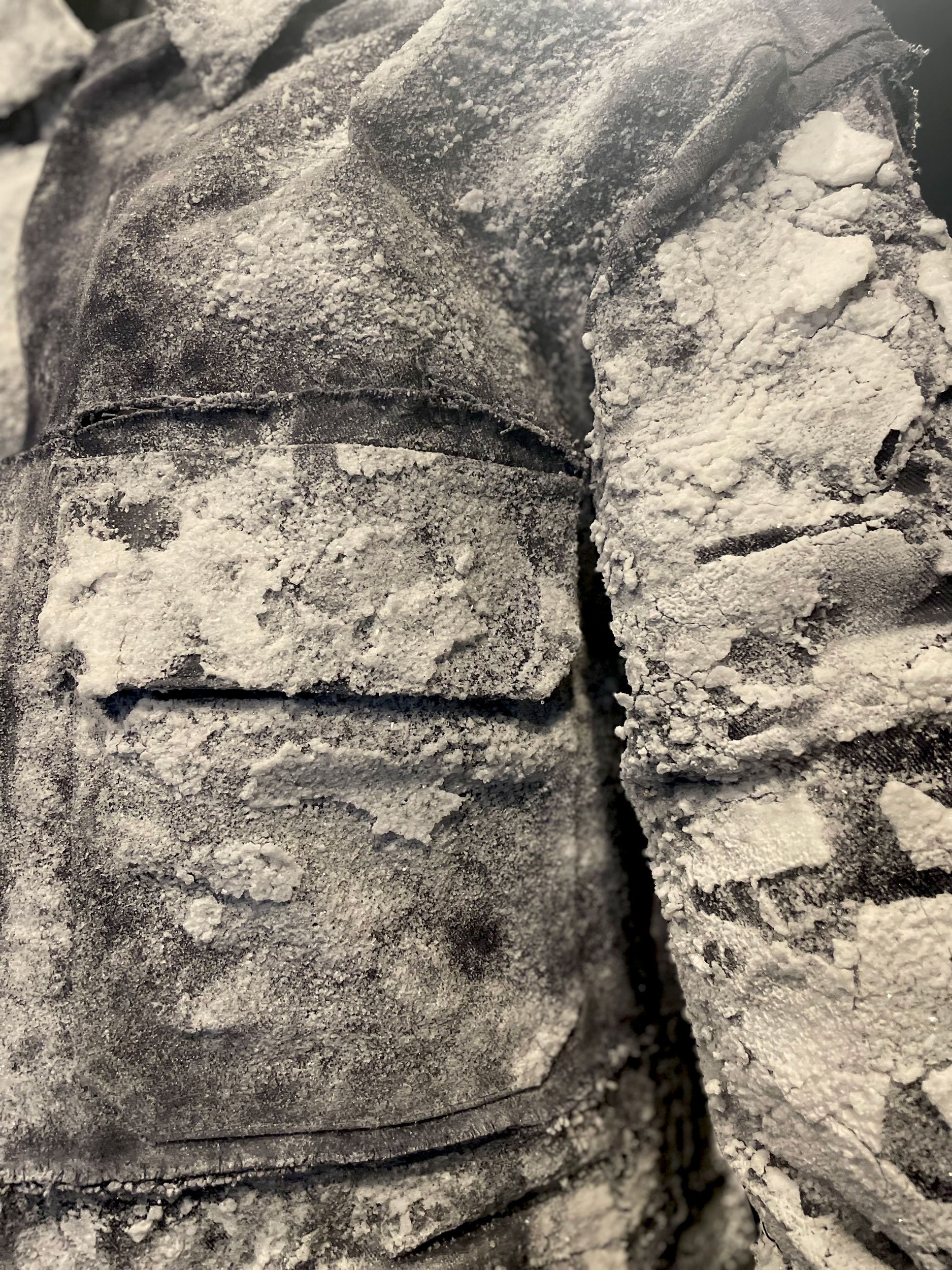

Shimmering, finely crafted piece "Woven Stories" by Kuba Święcicki incorporates upcycled VHS tapes into a sleek, lustrous fabric. The recordings contained within this piece are collected from friends and family, creating a structure of interwoven watched programs that sum up to collective memories and experiences acquired over time. The artwork evokes a sense of heartwarming nostalgia for personal and shared memories as well as their ability to connect or rather “weave” people together. Swiecicki’s work was inspired by “Deleted Texts” by Antoni Starczewski.

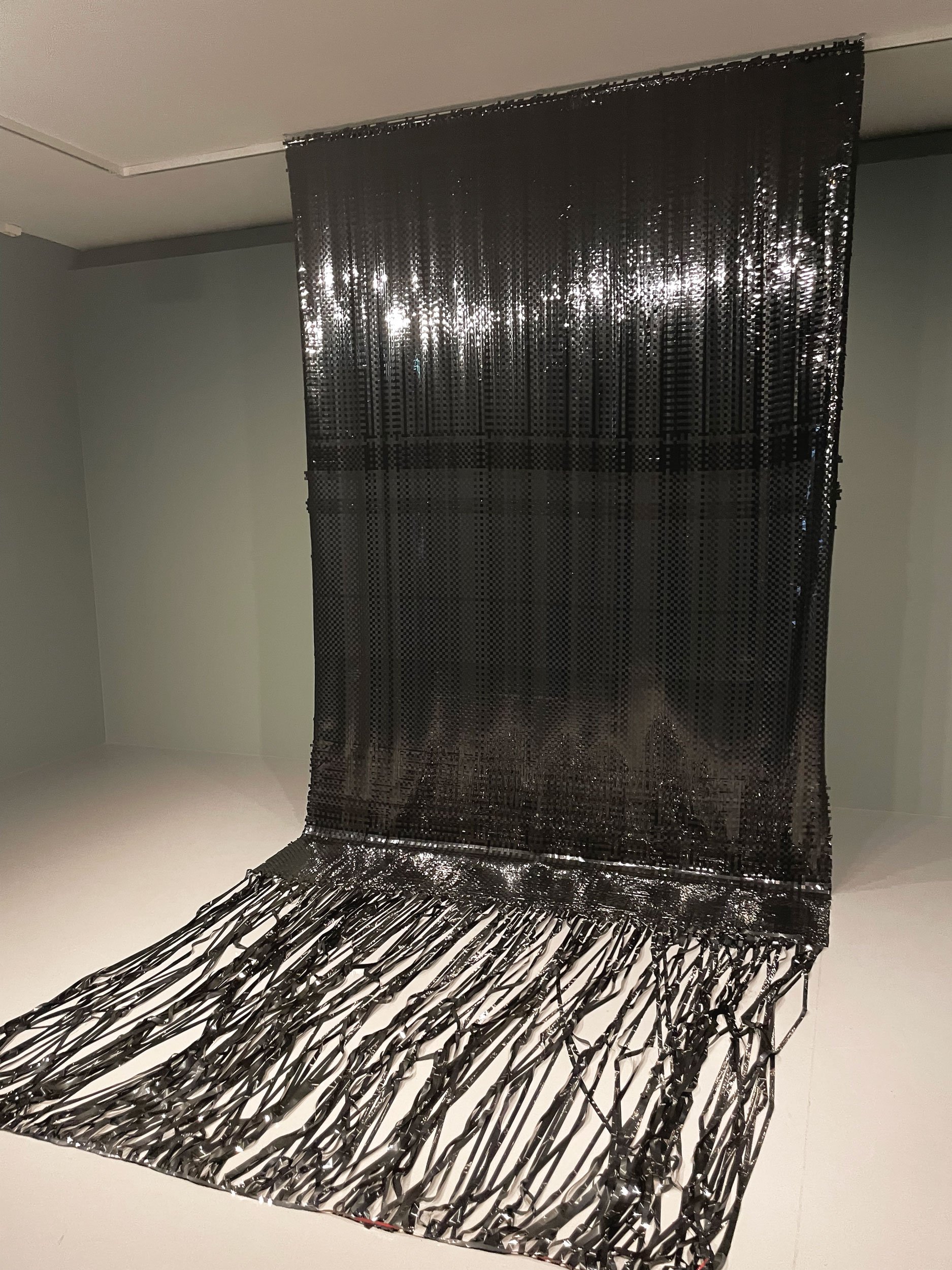
Piotr Madej in “The Music of Weaves”, in turn, looked at the fabric as a carrier of auditory information. "I envisioned that if there were some objective system that allowed the sonification of a piece of fabric based on its parameters, then each fabric would essentially constitute a separate musical composition.” as the artist explained in the exhibition’s video. In his work fabric becomes equal to musical scores. This innovative approach encourages us to view textiles as vessels of multi-sensory experiences blurring the boundaries between different art forms.
Artworks premiered at the Central Museum of Textiles in Łódź, curated by Marta Lisok, where the project outcomes were exhibited alongside selected pieces from the museum's collection. This arrangement aimed to establish a sense of commonality between contemporary and historical pieces while exposing them to new visions and sensitivities from young artists.
In Bergen, in turn, the exhibits were displayed without archival pieces. Each work stood independently, speaking on its own and prompting new reflections. Explored themes remain highly relevant today sparking concerns about the environment, women's rights, garment workers rights violation in the global south, and many more. Textiles continue to be a powerful medium for communicating these complexities which despite the passage of time are still unresolved and deserve to be addressed.
More info about the residency project and exhibitions can be found on the Central Museum of Textiles website.




